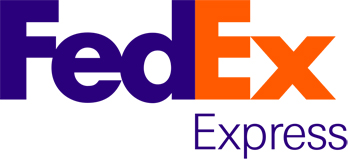
Today's journalists need skills that didn’t even exist when I was doing my block-release course at Sheffield’s Richmond College in 1978. Data, SEO, analytics, social media and video are now essential tools … but one skill that may be falling off the other end is typography.
In the gritty hot metal days, we went on typography courses with the inspirational Bob James. We learned about fonts, x-heights, ascenders, descenders, beards, leading, picas, points, ems and ens. We learned casting-off … a formula to calculate how much space the words were going to take up when they became slugs of metal. I remember getting six broadsheet pages of show results, set in 6pt, wrong by three columns and receiving a tongue-lashing from the fearsome composing room overseer.
I appeased him by throwing out a few pictures – and received another tongue-lashing from the process department, who made the metal photo plates, and the stereo who had put together the blocks for the plates to sit on. Casting-off saved time and blood-pressure levels. We learned tricks too. I was once told we couldn’t set the word ‘Monsoon’ in a splash headline because we only had two 96pt 0s. But I knew we could switch them for cyphers (aka zeroes) because we had three. Genius!
Most importantly, we learned about readability and legibility. Philosopher Herbert Spencer’s mantra was drummed into us. “No matter how great the author’s wisdom or how vital the message or how remarkable the printer’s skill, unread type is merely a lot of paper and a little ink.”
It was then that I fell in love with typography. I went on to redesign newspapers, instilling in them solid typographical disciplines, and taught typography on countless sub-editing courses. These days, I teach design, style, structure, headlines, software, media law … but never typography. When I send my course checklist to editors, nobody ticks the typography box.
It is hardly surprising. I regularly ask website journalists what fonts they use and 90 percent haven't a clue. One told me: “The tekkie department deals with all of that and the journos don’t need to know.” And, to a point, he is right. If the website has been designed so readers can glide through the home-page effortlessly, then the last thing we want is people tinkering, squeezing and tracking.
On the other hand, typography – the selection of typefaces, point size, line length, leading, the spaces between letters and between pairs of letters – is a basic tool of publishing.
So, how have typefaces really fared in the switch from paper to screen? And what do journalists still need to know? There is a lot to go at but arguably the most important are branding and readability … whether the website can be read effortlessly. Here is a glance at how both are doing in modern publishing:


Branding
Along with colour, fonts play a huge part in branding.
Graeme Down, sport art editor at the Daily Mail, has redesigned many newspapers. He stresses the importance of creative typography in branding. “I once asked my daughter, aged 11, could she spot the arrow (between the E and X) in the Fed Ex logo. She couldn't, but now it's the only thing she sees. It was designed to reflect the speed and precision of the brand. The Amazon logo has the arrow going from the a to the z, reflecting that it sells everything from a-z, and the arrow represents the smile customers should experience using its website. Whether subliminal or in your face, typography and its presence is everywhere.”
The same branding principles apply in publishing. Vogue’s titlepiece, with its Modern Didone-style font, has always struck me as an example of the perfect face for a specific audience. It works beautifully on an upmarket glossy magazine but the narrow strokes would be a disaster on newsprint. The branding stretches to its website where the masthead remains the same but the headlines, while serif, are a more robust screen-friendly font.
Typography has always played a huge part in magazine and newspaper branding. Take a look at the newspaper front page headlines on the following page – the typefaces alone make them instantly recognisable.
The Sun’s Tempo, Guardian’s Egyptian-style serif, Mirror’s Interstate and Mail’s DM Yellowsands headlines give them a clear distinction on the newsstands – even without the titlepiece. Then look at their respective websites where the branding has, out of necessity, developed. The Guardian’s online headlines continue with its print font but The Sun ditches the Tempo and the Mirror loses the Interstate for sans faces which have bigger bowls and curves than their print cousins. The Daily Mail, a middle market paper that has always used serif headlines, becomes a sans title online. Other than the word Mail, and the white on black slab serif on banners, there isn’t a serif to be seen. MailOnline, unlike the paper, brands its sections in colours. News is blue, sport is green, showbiz is red, Femail magenta, health turquoise and science orange. All those websites, although different from the papers, are equally recognisable. It is clear that extending print brands to online is far more subtle than just copying the old style.

Legibility and readability
If a font is readable, it means the readers can absorb information by scanning letters at speed. A legible font is one where it is easy to decipher individual characters. What this means in print is that headlines, where the reader takes the words in all at once, can be serif or sans. But body copy, where we read in a sustained way, has to be serif. All newspapers – even those with big sans caps headlines – use a serif for body copy. Almost every novel (an exception is Mark Haddon’s The Curious Incident Of The Dog In The Night-Time which uses sans to fit the personality of the book’s narrator) is set in a serif. It would be even more difficult to read James Joyce’s Ulysses than it already is, if it was in a sans face. We read by skimming across the tops of the letters and there is more information in the ascenders of a serif.
But in the move to screens, many titles have switched from serif body copy, set narrowly across a six-column grid, to a sans across a much wider measure. The Sun, Mirror and Mail have all changed to a clean serif, with wide open bowls and generous leading. All are designed for easy reading. Nobody finds the Mail, Sun or Mirror websites difficult to read. The ‘broadsheets’ including The Times, Telegraph and Guardian, on the other hand, have persisted with a serif for their body copy. And these too are readable. It is clearly a myth that only sans faces work online.
And then there are capitals. They exist for emphasis – to shout. Tabloid newspapers often use caps for headlines. But they take up more space and the lack of ascenders makes them harder to read. All UK road signs are in a lower case sans called Transport – they were designed so that, when you are hurtling through lorry spray along the motorway, you have the best chance of spotting your turning. All EU warning signs on cigarette packets are, you guessed it, lower case and sans. It’s an important message and needs to be read.
I am pleased to say caps online have become rare … even among the tabloids. The Mail and Mirror use lower case headlines – with only the odd word capped up for emphasis. The Mail only uses caps for its WOB banner, white out of colour section headers and headlines on its factfiles. The Sun hangs on to caps for the red kickers – these are normally puns, which are also part of its brand. It will be a sad day when the SEO specialists persuade us that puns don’t work online.
And what about italics – those slanty faces that should be banned from newsprint (yes, even for film and book titles)? Well, the really good news is that the web has just about killed them off. Even The New York Times seems to be keeping them to a minimum these days.
Everyone is a designer now. The skill set is diminishing. In the same way, Instagram is eliminating photography skills.
The design view
I asked two of the industry’s leading designers for their view of today’s typography … Graeme Down of the Daily Mail and Mike Brough of Ffresh Creative. Brough, who has worked with me on the design of more than 100 titles, reckons it is the selection of fonts that is critical: “At the outset, we determine what the publishing project needs, whether it requires a single family of fonts or a number of families. When looking at body copy, I would want to know what the design brief objectives are – a typeface that offers economy or perhaps an ageing readership that requires a more readable typeface. I would also use a checklist to build a list of typographic requirements … headlines, standfirsts, panel text; contrasting headlines to create textural colour.”
Down also stresses the importance of selection: “Typography has come a long way. In the same way fashion designers follow different trends every season, typography does too. Type foundries create fonts that create trends and these are evolving every year. Yet the underlying foundations on which a great typeface is showcased remain. Not only is the right size important but the correct kerning and leading are also key.”
“The web has a lot to answer for in regards to typography. Everyone is a designer now. The skill set is diminishing. In the same way, Instagram is eliminating photography skills.”
Down says while some websites get it right, and are fantastically designed with the scale and proportions correct, many more get it wrong. “It's the standards I worry about. The fact a typeface can be resized, scaled or skewed on screen, without any boundaries means all production journalists need to learn the basic rules and disciplines.”
He argues that journalists need to understand that typography is essentially a communication tool: “It attracts the readers, conveys a mood, establishes a hierarchy, helps the readers navigate their way round complex pages and reflects professionalism.”
Brough agrees: “While the acquisition of fonts is easier, we still need to treat them with respect – and remember: There are no good or bad typefaces, just appropriate or inappropriate applications of a font.”
So, there you have it; in the world of templating and pre-designed pages, we need to continue to teach, learn and understand typography. It’s fascinating and, as well as being a professional skill, it’s also a life one.
Whether subliminal or in your face, typography and its presence is everywhere.
This article was first published in InPublishing magazine. If you would like to be added to the free mailing list, please register here.










